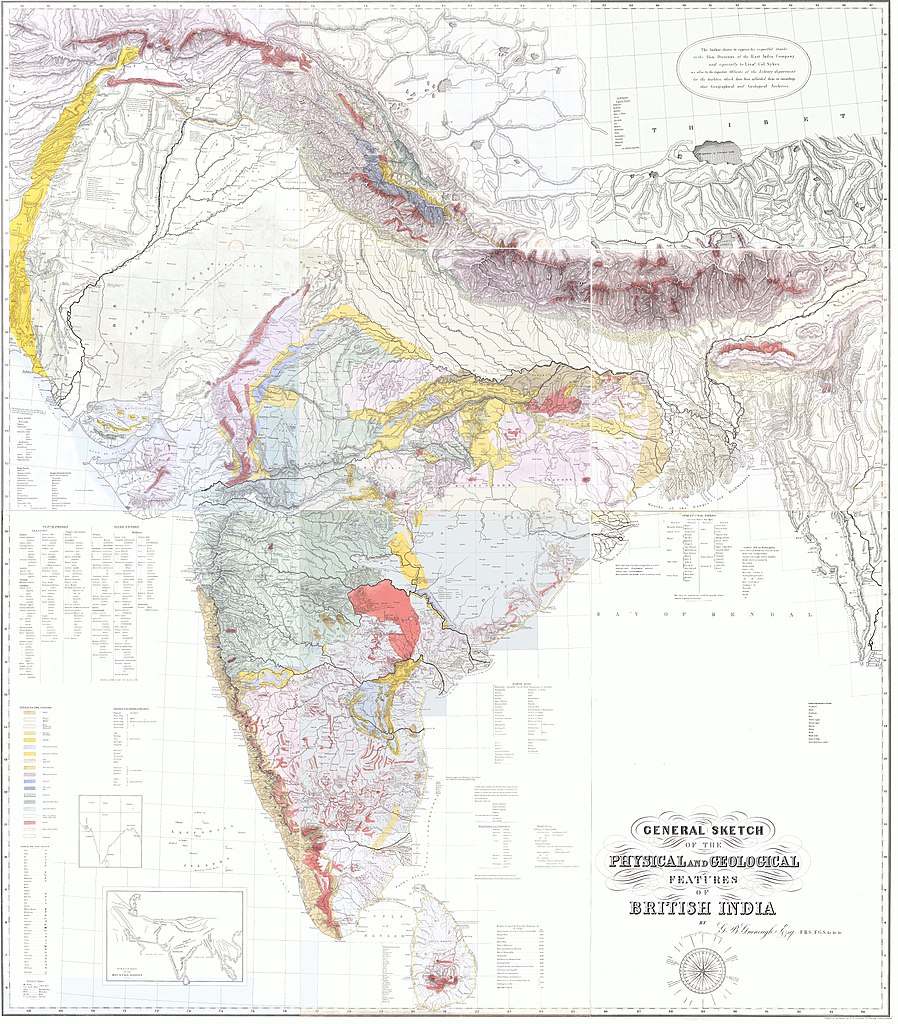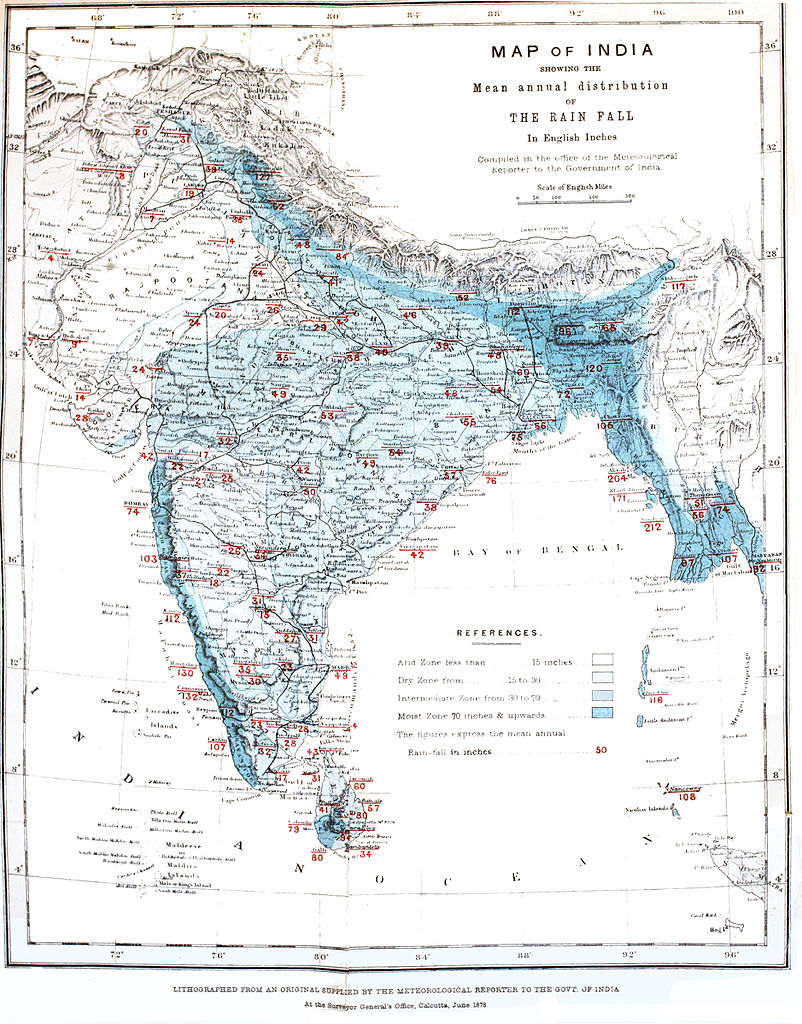 |
| The tomb of Willam Graham McIvor in the St Stephen's Church cemetery in Ooty. |
The story of quinine in India is an interesting one and has some surprising connections to ornithology in India that I was exploring on a recent visit to the Nilgiris.
The story behind malaria, cinchona and quinine is so fascinating that the sheer number of publications on the history of cinchona is staggering (there are several bibliographic compilations on the topic!). Looking at the literature for India suggests that vast changes in landscape have been caused just so that people (at least the ones that did not have sickle cells and other forms of evolved resistance to malaria) could enter new regions which they further altered by building roads and habitations. "Malarious" regions, mainly forests, were probably large pockets of natural protection for biodiversity. Malaria literally means bad air and the theory was that diseases were spread by miasmas (gases or mists) and this partly justified the idea of treating higher elevations as safe sanataria. There was even the field of "medical topography" that dealt with the spatial distribution of disease and although they might have erred on causal factors, the practitioners did attempt to collate evidence. The sheer number of people involved in researching and fighting the problem (often dying in the process) of diseases (particularly malaria, plague and cholera) and the spin-offs to the sciences of botany, entomology, chemistry and oddly ornithology is just incredible. Scientific pursuits that saved human lives earned a halo of nobility. Seen in this light, the public repute of the botanist is sadly a lot lower than it was before.
The cinchona introduction program was part of a solution to a problem coming in the way of the colonial quest for more lands. The Spanish had discovered the effectiveness of Cinchona bark in curing malarial fever and their extraction of the bark led to near complete destruction of trees in some regions and then the British Empire saw the problem of dependence on dwindling South American supplies and rising costs.
 |
| Detail on the tomb of McIvor with Cinchona carvings |
Clements Markham is the man who takes a lot of credit for the cinchona program in India. He was knighted for this achievement but the idea that cinchona could be grown in the Nilgiris was first floated by John Forbes Royle. Royle "inferred from a comparison of soil and climate with the geographical distribution of cinchonaceous [=Rubiaceae] plants, that the quinine yielding cinchonas might be cultivated on the slopes of the Neilgherries, and of the Southern Himalayas, in the same way that I had inferred that Chinese tea plants might be cultivated in the Northern Himalayas." (27 June 1852)
Markham, a chronicler, explorer, geographer and writer also attempted to bring back the spelling Chinchona to correctly reflect its etymology - the plant is named after Lady Ana de Osorio, countess of Chinchón, wife of the Viceroy of Peru, who was (according to a very dubious version) in 1638 afflicted with a "tertian" fever while in Lima. Don Francisco Lopez de Canizares, heard of her illness and sent a parcel of bark that was used by the natives around Quito to treat fevers (worth remembering that South America was by and large malaria free, although it may have had one form of malaria, until Columbus and European movement c. 1492). The Countess recovered rather miraculously and word of the drug travelled rapidly. She took back bark to Spain to distribute among the sick there and it soon came to be known as Pulvis Comitissae (the Countess' powder) among the druggists. Linnaeus came to hear of the plant via the French and though he intended to name the genus after the Countess, he spelt it wrong (in the 1767 edition it even got printed as "Cinhona"). The Spanish botanists Ruiz Lopez and José Antonio Pavón Jiménez noted the spelling mistake and described several species in the genus but the spelling stuck and many were upset that it credited "cinchon", a policeman's belt, instead of their dear Countess. Markham's attempts at taxonomic emendation of the spelling were not as successful as his mission to introduce cinchona into India.
 |
| Markham's map of the "Chinchona" plantations. |
 |
| An illustration from 1862. The European man sitting in the group is Sir William Denison (after whom Francis Day named the pretty fish - "Miss Kerala" (Sahyadria denisonii ). To Denison's left and holding a spade is McIvor. McIvor helped transport trout for Day's project to introduce them into the Nilgiris. Day started off as an ornithologist before taking an interest in fish. He supported Hume's Sind bird survey. |
...result was due in no small degree to the action of Mr. A.O.Hume C.B, the Secretary to the Government of India in the Department of Revenue, Agriculture, and Commerce.
...
Mr. Hume saw that two millions of Her Majesty's subjects were annually living in India of low malarious fevers, of which fully half might he saved if we could put the chinchona febrifuge retail into every pansari's shop at 1 rupee per ounce. He calculated that ten tons a year at least should be forthcoming, or, on an average, 100 grains per man. Mr. Hume felt strongly on the subject, because he had had great practical experience of malarious fevers; because he had proved, in thousands of cases, that the chinchona febrifuge is a real remedy; and because we had triumphed over the cultivation difficulty, and could, at comparatively very moderate cost, ensure in ten years a bark crop sufficient to produce the ten tons required. He felt that nothing stood between us and the saving of countless multitudes from death, or grievous suffering, but an economical process of manufacture; and that, rightly considered, this is infinitely more important than any other question before the Government of India. It involves simply the possible saving of a million lives and of an immensity of suffering such as few can adequately realise. He urged that nothing should be allowed to come in the way of this great work, that it should not be paltered with, but that it should be taken in hand at once, in the very best way that could be discovered, and with the ablest instruments money and trouble could procure.
 |
| Davison could speak Tamil, "Burmese", Malay and Hindi! |
Apart from Davison, Hume had another major ornithological correspondent in J. Gammie at Mungpoo, Darjeeling who was in charge of the cinchona plantations. It appears that Gammie was a major collector of fauna and specimens from Mungpoo have gotten around the world since. (Some years ago there was a query for locality information for a specimen of Bengalia (a kleptoparasitic fly) from Mungpoo). There is very little known about J. A. Gammie though his son, George Alexander Gammie (1864-1935) is a better known botanist. Gammie senior collected plants, birds, insects, and reptiles for various collaborators and correspondents. He is remembered in Lycodon gammiei.
 |
| An odd cinchona tree (presumably C. succirubra) in Ooty being admired by Henry Noltie. |
The cinchona project was obviously not a complete success as malaria managed to keep a grip (and still does today with the potential to save some wilderness areas) and the next big wave of work on the disease was by the surgeons and physicians of the Indian Medical Service. Many of them, with a completely new level of training in biology, contributed to the study of natural curiosities and contributed beyond their professional area of research.
The cinchona project had its impact well beyond India - even in its ornithology spin-offs. Imagine my surprise when I found that a comprehensive bibliography of cinchona cultivation was compiled in 1945 by R.E. Moreau, the brilliant ornithologist who worked in Africa as an accountant.
Note: Please note that tonic water today does not have the quinine levels
needed for therapeutic use, so no it is not beneficial to your health! You can however have some fun by shining
ultraviolet light on tonic-water and watch it fluoresce.
Postscript: There is an interesting paper on malaria research and birds - pointing out how birds were used for testing anti-malarials while also playing a key role in the plasmodia research of Ronald Ross. (Manwell, Reginald D. (1949) Malaria, birds and war. American Scientist 37(1):60-68.)
Further reading
Postscript: There is an interesting paper on malaria research and birds - pointing out how birds were used for testing anti-malarials while also playing a key role in the plasmodia research of Ronald Ross. (Manwell, Reginald D. (1949) Malaria, birds and war. American Scientist 37(1):60-68.)
Further reading
- Bibliography on Cinchona (Kew)
- A short history
- Malaria treatments
- King, George (1880) A manual of Cinchona cultivation in India. Calcutta: Government Press.
- Moreau, R. E. 1945 An annotated bibliography of cinchona-growing from 1883-1943. Nairobi: Government Printer.
- Raman, A. (2012) Malaria management in the 18th and 19th century India: role played by Madras Presidency. Current Science 102(12):1717-1720.
- Tan, Kevin Y.L. (2015). Of Whales and Dinosaurs: The Story of Singapore's Natural History Museum. Singapore: NUS Press.
- Veale, Lucy (2010) An historical geography of the Nilgiri cinchona plantations, 1860-1900. PhD thesis, University of Nottingham.
- Wilson, A & T.J. Mirchandani (1939) Report on the Prospects of Cinchona Cultivation in India. Imperial Council of Agricultural Research.




































